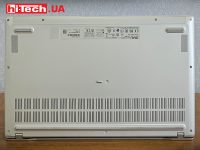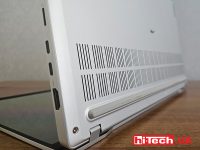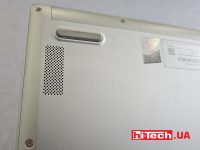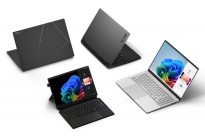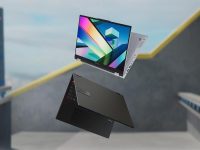ASUS Vivobook S 15 Laptop Review with Qualcomm SoC: Promising?
30.09.24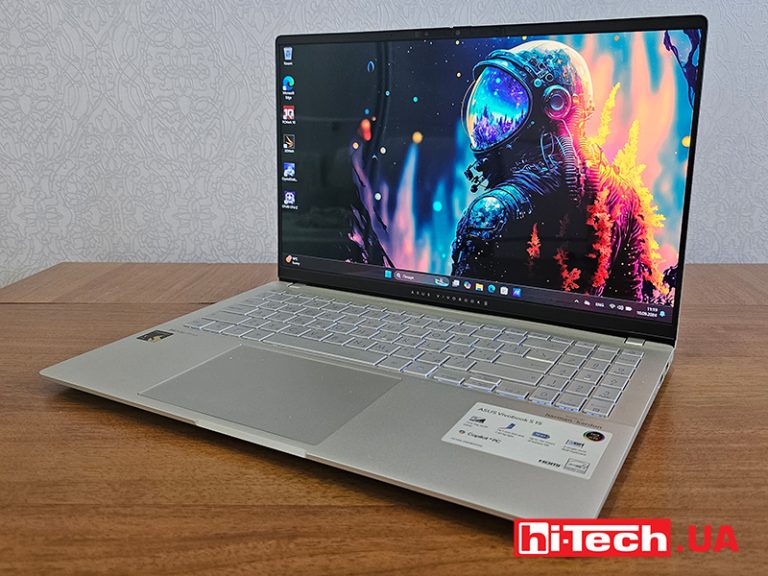
The chassis of ASUS Vivobook laptops turned out to be so successful that you can meet with it both basic working models and advanced variants with top processors and discrete accelerators. It is not surprising that Vivobook also became a platform for running in processors from the manufacturer of mobile chips – Qualcomm. In this material, we will talk about the ASUS Vivobook S 15 with the Snapdragon X Elite processor and understand its capabilities.
Design
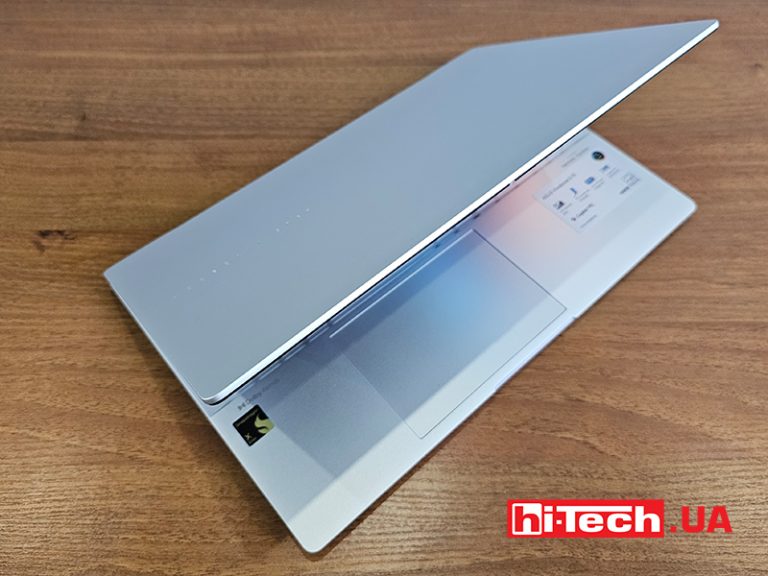
From the point of view of appearance, you won’t have to tell much. Our readers are familiar with various variations of this line, and the Vivobook S 15 model does not stand out in any way. But this does not mean that there is something wrong with her. It is beautiful and of high quality, and the ergonomics deserve praise.

In general, we have a rather thin case, with a weight of less than one and a half kilograms and thin frames around the screen. There is a full keyboard with a numeric pad, a medium-sized touchpad, various ports on the sides and a webcam with infrared sensors.

In our case, the metallic silver color is diluted with only a few design accents. On the lid is a chrome inscription with the name of the series, made in a thin font. The black frame around the display also duplicates it from below. It also hides a glossy strip with a camera and sensors that do not catch the eye. The lens can be closed with a physical curtain.

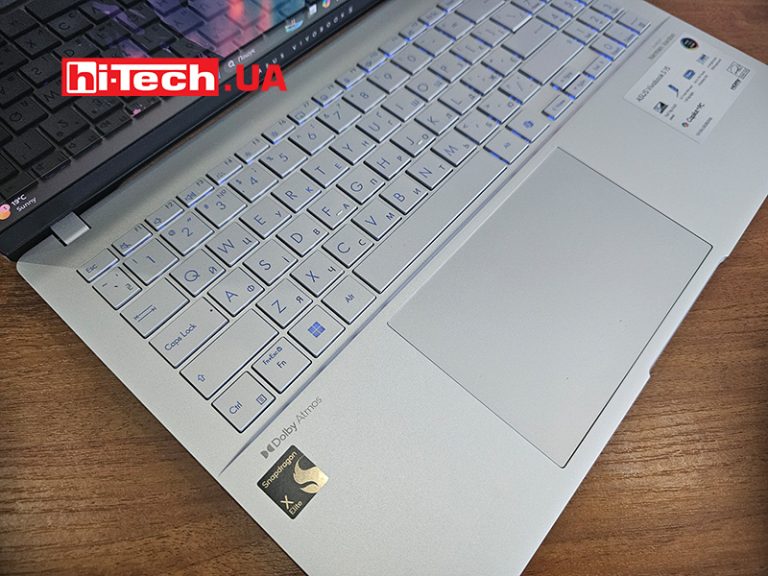
The keyboard occupies the maximum possible space from edge to edge. The buttons are large and easy to type. Key stroke 1.7 mm. The right shift is quite long. Otherwise, the dimensions are standard. The digital block is pressed to the right, the keys with mathematical functions are moved to the top. And the arrows are usually halved for office models. Power button in the upper right corner. It has no notches, other texture or color.
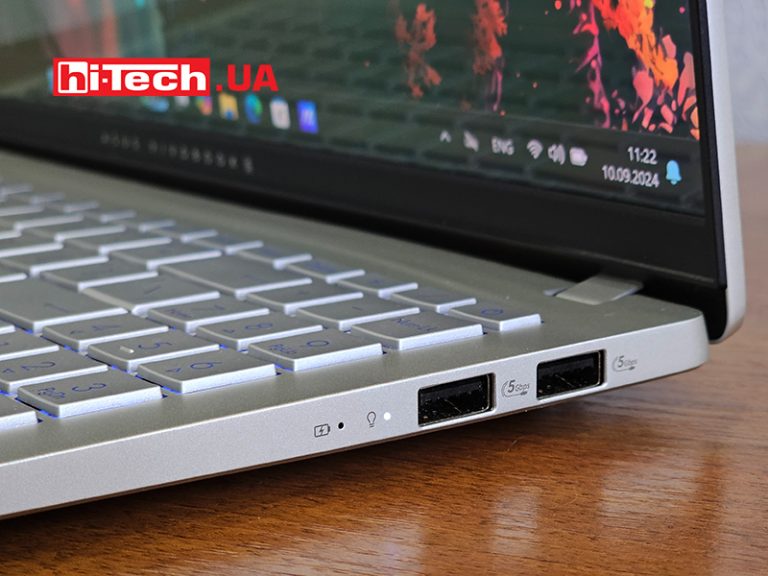
HDMI, two USB Type-C, card reader and audio connectors are installed on the left side. On the right is a pair of fast USB Type-A and LEDs for indicating operation.
The bottom received a narrow ventilation grill almost the entire width of the panel. The speakers are closer to the user in all directions. The back of the lid has a nice cutout, and below it on the corner end of the base is another strip of holes for ventilation.
Equipment
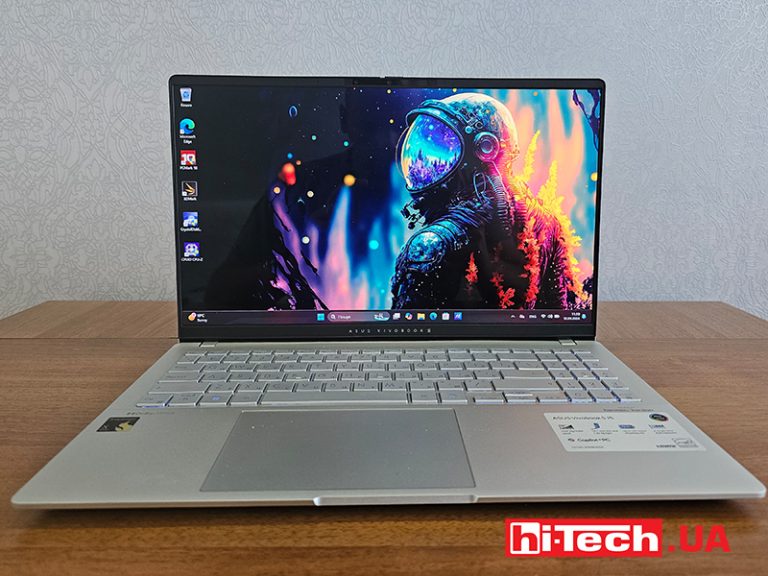
The laptop has a 15.6-inch OLED display with a 3K resolution. The number of pixels is a bit unusual – 2880×1620, but this is the standard for the past times of the 16:9 ratio.
The organic LEDs of the matrix by themselves mean that the screen is cool. In numbers and terms, this is the highest maximum brightness of 600 cd/m2, DCI-P3 space coverage at 100%, contrast ratio of 1,000,000:1. There is a VESA Display HDR True Black 600 certification. To summarize, the best screen that a laptop can get.
The model can be equipped with two processor options from Qualcomm – Snapdragon X Elite X1E 78 100 and Snapdragon X Plus X1P 42 100. They differ in the number of cores and threads – 12 and 12 against 8 and 8 for the youngest. The working frequency is the same. The additional neural processor, which takes on basic and similar tasks, has a slightly higher performance in the first version of 75 versus 45 TOPs. In our case, a more powerful option is installed. The chip has integrated Qualcomm Adreno X1 graphics.
Snapdragon X Elite X1E-78-100 is a processor (SoC) of ARM architecture, designed for use in laptops with Windows OS. The previously mentioned 12 Oryon cores are represented by arrays of two types – 8 P cores and 4 E cores.
The tests yielded very decent CPU performance numbers, showing that the X Elite is on par with the AMD Ryzen 7 7840U. It’s also much faster or slower than Apple’s M3 chip with 10 GPU cores.
In addition to numbers, the compatibility factor is much more important. Like any other Windows platform on ARM, the Snapdragon X chip works best with apps and games built specifically for ARM processors. When using ARM’s built-in x86 emulation mode, expect a performance loss of around 20%. Some knowledge base on this matter is already collected on the Internet. Enthusiasts checked hundreds of performance with Snapdragon chips in laptops. Much more importantly, in the table we refer to, you can find a column for the program’s operating mode and the result of the run. Not all programs are adapted for ARM, so it is worth considering that they should not only start, but also work stably.
32 GB of RAM of LPDDR5X format is installed. They are unsoldered on the board, so it will not be possible to deliver them yet. Although this amount is quite enough. The notebook can have two storage options of 512 or 1024 GB. In our case, there was a top variant M.2 SSD with NVMe PCIe 4.0.
Wireless communications of the latest revisions. This is both Wi-Fi 7 and Bluetooth 5.4.
There is a rather large battery for 70 W per hour. It allows you to work all day long, and not only in the browser and typesetting format. Short work in photo editors will not drain the battery too quickly. 15 hours is quite gentle, although not the most economical mode offered in the OS. So you can try not to take the charger with you to work. Although it is not that big.
All this made it possible to obtain interesting data, judging by the histograms. The fact is that the processor is well optimized for various workloads. Video does not become a difficult test for him, at least the integrated Intel adapters are sometimes noticeably weaker. But even in graphics tests, it sometimes overtakes models with last year’s video cards.
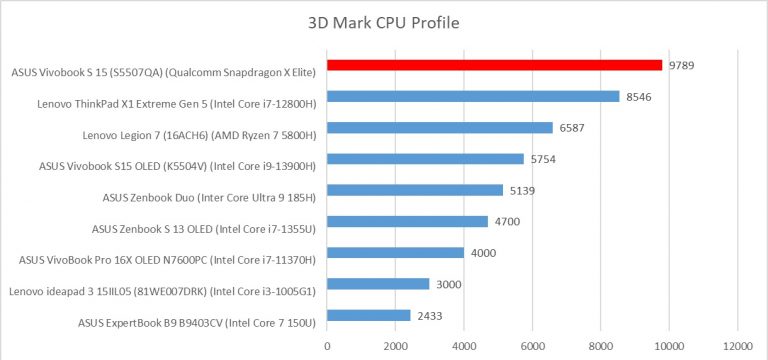



Impressions
ASUS Vivobook S 15 should be characterized from two sides – a laptop we are used to and a more delicately felt one that relates to the user experience. With the first, in general, everything is expected and understandable. A qualitatively assembled, thin and not heavy laptop, which received a cool screen, a sufficient number of ports, memory and generally good ergonomics.
And here is the user experience, which does not usually correspond to the first part, since we have the familiar Windows, but it uses a processor that has not been seen before. Therefore, technically, most popular programs work, passwords, browsers, pictures, messengers, media – everything works and starts as usual. But there are nuances.
Like any other Windows platform on ARM, the Qualcomm chip works best with applications built specifically for ARM processors. Not even all modern programs have special versions and often run in compatibility mode, which eats up some performance. Expect a performance loss of around 20% when using ARM’s built-in x86 emulation mode. Some knowledge base on this matter is already collected on the Internet. Enthusiasts checked hundreds of performance with Snapdragon chips in laptops.
For example, Adobe programs run in x64 compatibility mode, while Blender runs in x86. At the same time, Davinci is completely unavailable. That is, those who are used to a particular video editor should be on their guard. As an illustration of a set of programs compiled for ARM – Daemon tools, Firefox, Notepad++, OBS, VLC. Let’s say, this is not a sophisticated, but characteristic set of software.
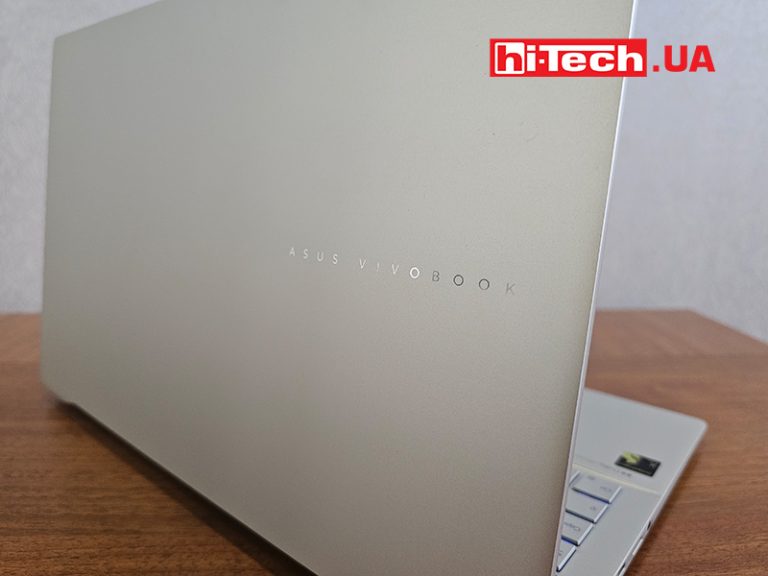
Regarding our intelligence, we will mention a few. The Windows Hello function in principle was not particularly slow in the notebooks where we encountered it. At least because it is an option more often for expensive, and therefore, productive models. According to both articles, the Vivobook S 15 is also in this segment. But according to feelings, it is with Snapdragon that the system unlocks faster than ever. And it’s not only about the camera and sensors, but also the ability of the OS to start faster.
To some extent, the continuation of this observation was the speed of operation when working from a battery. With the Vivobook S 15, we often didn’t notice whether it was running on a power outlet or its own battery. You probably know that usually, even a powerful laptop processor may not cope from time to time, and scrolling the menu, playing a video, dragging an object, or navigating may be accompanied by small jerks. They are insignificant, especially affecting the work process, but they are present. The ARM processor allows the system to work without such small artifacts.
Why ARM?
ARM combines high-performance RISC designs, lower manufacturing costs, and reduced power consumption. Therefore, they are well suited for portable devices such as smartphones, tablets and now laptops.
Autonomy is also at the level of stable models with economical processors and considerable batteries. However, the feeling of this independence from sockets, together with the smoothness of work described a little above, make the user experience downright unusual. The feeling of using a smartphone with a very large screen and a full keyboard.
In general, there are enough positive points not to consider such an experiment with architecture unsuccessful. There are definitely advantages, which are not so many that we turn a blind eye to program compatibility. Although if you use a normal set, then there should be no difficulties. But if the price was a little lower, then the device would be perceived in the full sense as fast and mobile, without any claim to ultimateness. This is a high-quality and fast solution that will cope with daily tasks, make the work process comfortable, put the latest technologies at the user’s disposal, but also ask for enough conditional resources in return.

Laptop features ASUS Vivobook S 15 (S5507QA)
| Display: | 15.6″, OLED, 3200×2000, 16:10, 120 Hz |
| Processor: | Qualcomm Snapdragon X Elite X1E 78,100, 3.4 GHz (42 MB cache, up to 3.4 GHz, 12 cores, 12 threads) |
| Video card: | Qualcomm Adreno GPU |
| RAM: | 32 GB, LPDDR5X |
| Accumulator: | 1024 GB, SSD M.2 NVMe, PCIe 4.0 x4 |
| Connectors: |
|
| Webcam/Microphone/LAN: | Full HD/yes/no |
| Card reader: | MicroSD |
| Dactyloscopic sensor: | no |
| Wireless communications: | Wi-Fi 7 (802.11ax), Bluetooth 5.4 |
| Protection: | no |
| Keyboard lighting: | white |
| Battery: | 70 Wh, 3-cell Li-ion |
| Additionally: | IR sensors |
| OS: | Windows 11 |
| Dimensions: | 352.6×226.9×15.9 mm |
| Weight: | 1.42 kg |
| Provider: | ASUS representative in Ukraine |
| Price: | approx $1340 |
Rating:
+ speed
+ autonomy
+ equipment
– compatibility with applications
Read also:
- Laptop test Acer Swift Edge OLED SFA16-41: working moments
- Laptop testAcer Swift Go 14 SFG14- 71: an easy, not a simple solution
- Laptop test Acer Swift Edge 16 SFE16-43: emerald
Editor
Don't miss interesting news
Subscribe to our channels and read announcements of high-tech news, tes
Oppo A6 Pro smartphone review: ambitious

Creating new mid-range smartphones is no easy task. Manufacturers have to balance performance, camera capabilities, displays, and the overall cost impact of each component. How the new Oppo A6 Pro balances these factors is discussed in our review.
Editor’s Choice 2025. Best devices of the year by hi-tech.ua

The best gaming laptops, mice for work, gaming keyboards, smartphones, and wireless headphones of 2025. Among them, we will highlight the most interesting ones and those that we can recommend buying.
Modern Mercedes-Benz Unimog get 7.7-liter V6 car Mercedes-Benz
The concept is based on the Mercedes-Benz Unimog U 4023 with portal axles, a robust frame and a full set of differential locks. The main technical change was the replacement of the standard 5.1-liter diesel engine
Honor почне випускати ігрові смартфони games Honor smartphone
За швидкодію відповідають флагманські платформи Qualcomm: Honor Win побудований на Snapdragon 8 Elite, а Honor Win Pro – на новітньому Snapdragon 8 Elite Gen 5

